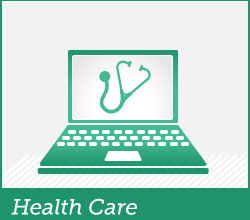This post was originally published on Educate the Young.
This post was originally published on Educate the Young.
 I recently came across an old blog post by Lee Aase, Director, Mayo Clinic Center for Social Media, Move Over Dr. Google, the future of health is social. Aase, a long-time communicator in the political arena, has seemingly picked up the new tools of the trade with a flair all his own for healthcare. This particular post from 2011, alludes to the fact that Google may not have been hitting the core of how individuals will utilize health information in the future. His post significantly preceded Google folding their health business for good in January of this year.
I recently came across an old blog post by Lee Aase, Director, Mayo Clinic Center for Social Media, Move Over Dr. Google, the future of health is social. Aase, a long-time communicator in the political arena, has seemingly picked up the new tools of the trade with a flair all his own for healthcare. This particular post from 2011, alludes to the fact that Google may not have been hitting the core of how individuals will utilize health information in the future. His post significantly preceded Google folding their health business for good in January of this year.
Already a student and believer of the power of social media to change the way we experience health and illness myself, it’s always nice to have other expert communicators confirm those beliefs. For me, healthcare social media use (or #hcsm on Twitter) is less about the social support that traditional social media tools offer, such as people sharing the same illness connecting–which has tremendous value in and of itself. It is more about the reach, and the following opportunities social media can provide healthcare stakeholders on the whole. For example, social media tools offer:
For Patients:
- The ability to gather information in a relaxed setting
- Access and information on research studies
- Connections to new resources (peers, providers, educators)
- Access to answers 24/7
- Greater transparency to the care they are seeking
- Behavior change (see ETY post, The Power of Social Networks to Change Health Behavior)
For Providers:
- Inspiration
- Training/Education
- Support networks of their own
- Ability to meet patients where they are and stay connected
- Disease and outbreak tracking
It was, however, the following video in Aase’s old post that caught my eye and was my muse for this post, as I can’t help but applaud the growing value of YouTube as a tool for patient education and provider inspiration that I see becoming yet another benefit to the use of social media in healthcare.
In February 2013, Aase posted an article on Mayo Clinic’s Social Media Health Network, The “Right” Length for Health Videos, which summarizes a Google chat facilitated by Kathi Browne, a healthcare social media consultant. This is a timely discussion, as we are currently at work developing videos that convey patient safety information to associates without overwhelming their already overflowing inboxes. With so much competition for the attention of healthcare associates, what is the best way to get your message heard? We have chosen to go with short, sweet and humorous videos for internal education when possible. What successful strategies and tactics have you employed, beyond the traditional healthcare communication Tool Kits or inservices? Please share!
Here are some related tips gleaned from experience and reading of late!
- Know your audience!
According to Aase patients, will pay attention to longer videos, especially if it’s about a rare disease, as there is likely little information available. Overloaded associates will not have time to digest lengthy content. Give them meaningful highlights that both engage and educate. - Humor works!
Make ‘em laugh, or make ‘em cry… - Tell a story that touches the heart!
People will remember a story told from the heart much longer than slides from a PowerPoint deck. Talk to patients and providers about their experiences in healthcare and share those stories when appropriate.






